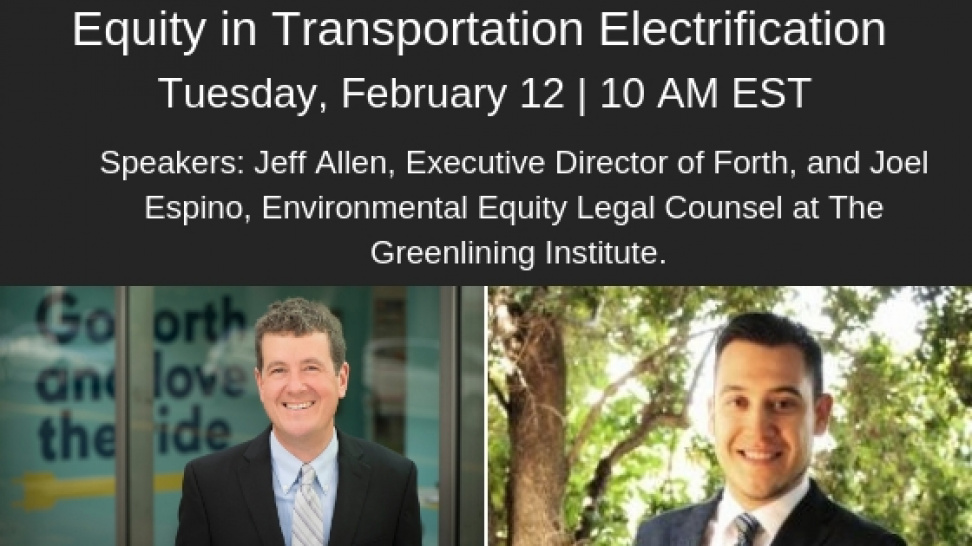
Equity in Transportation Electrification
By: Forth
Transportation is the second greatest expense for most households, and transportation investments have historically reinforced patterns of inequality and exclusion. As a result, traditionally underserved communities have less access to clean mobility access; higher mobility costs; and fewer economic opportunities in new mobility industries.
Utilities, advocates, and cities are increasingly interested in addressing equity in transportation electrification and new mobility efforts. However, some early efforts have been ineffective and occasionally counterproductive.
This interactive webinar explored the key dimensions of equity as it relates to transportation electrification programs. Jeff and Joel discussed why it is so critical to center equity early in program development, explored strategies for developing effective programs and highlighted some promising strategies, developments, and pilot projects.
Resources:
- Mobility Equity Framework: How to Make Transportation Work for People (March 2018)
- Delivering Opportunity How Electric Buses and Trucks Can Create Jobs and Improve Public Health in California (October 2016)
- Diversity, Equity, Inclusion Statement (November 2017, Forth)
- Electric Vehicles for All: An Equity Toolkit (August 2016, The Greenlining Institute)
- Electric Carsharing in Underserved Communities: Considerations for Program Success (January 2015, The Greenlining Institute)
- Community EV Project Report (June 2018, Forth)
- EV 101 in 7 Languages (2018, Forth)
- EV Update: PG&E to Deploy EV Charging Stations in Low-Income Communities (January 2018, The Greenlining Institute)
- Charge Ahead California, In 2014, Greenlining worked with the Coalition for Clean Air, Communities for a Better Environment, Environment California, and the Natural Resources Defense Council to co-sponsor Senate Bill (SB) 1275, the Charge Ahead California Initiative, authored by Senate President Pro Tem, Kevin de León (D – Los Angeles). The bill was supported by over 50 diverse groups. Now, working with these same allies as part of the Charge Ahead California campaign we shape implementation of this law, work to place one million light, medium, and heavy-duty EVs on California’s roads by 2023 and ensure that all Californians, and especially lower-income households most impacted by air pollution, benefit from zero-emission vehicles.
View presentation here:
View the full webinar here:


